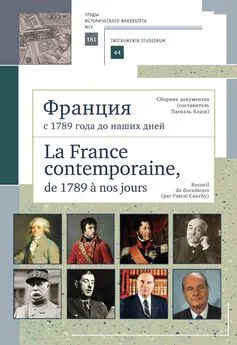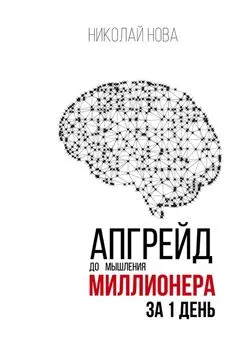Паскаль Буайе - Объясняя религию. Природа религиозного мышления
- Название:Объясняя религию. Природа религиозного мышления
- Автор:
- Жанр:
- Издательство:Литагент Альпина
- Год:2016
- Город:Москва
- ISBN:978-5-9614-4508-4
- Рейтинг:
- Избранное:Добавить в избранное
-
Отзывы:
-
Ваша оценка:
Паскаль Буайе - Объясняя религию. Природа религиозного мышления краткое содержание
Объясняя религию. Природа религиозного мышления - читать онлайн бесплатно ознакомительный отрывок
Интервал:
Закладка:
Hertz, R. (1960). A contribution to the study of the collective representation of death . London: Cohen & West.
Hirschfeld, L. A. (1986). Kinship and cognition: Genealogy and the meaning of kinship terms. Current Anthropology , 27, 235.
Hirschfeld, L. A. (1993). Discovering social difference: The role of appearance in the development of racial awareness. Cognitive Psychology , 25, 317–350.
Hirschfeld, L. A. (1996). Race in the making: Cognition, culture and the child's construction of human kinds . Cambridge: MIT Press.
Hirschfeld, L. A., and S. A. Gelman. (1999). How biological is essentialism? In D. L. Medin and S. Atran (eds.), Folkbiology , 403–446. Cambridge: MIT Press.
Houseman, M. (1993). The interactive basis of ritual effectiveness in male initiation rite. In P. Boyer (ed.), Cognitive aspects of religious symbolism , 207–224. Cambridge: Cambridge University Press.
Houseman, M., C. Severi. (1998). Naven and ritual . Leiden: Brill.
Humphrey, C., and J. Laidlaw. (1993). Archetypal actions: A theory of ritual as a mode of action and the case of the Jain puja . Oxford: Clarendon Press.
Humphrey, N. (1996). Leaps of faith: Science, miracles, and the search for supernatural consolation . New York: BasicBooks.
Hutchison, W. D., K. D. Davis, A. M. Lozano, R. R. Tasker, J. O. Dostrovsky. (1999). Pain-related neurons in the human cingulate cortex. Nature Neuroscience , 2(5), 403–405.
James, W. (1972 [1902]). Varieties of religious experience . London: Fontana Press.
James, W. (1988). The listening ebony: Moral knowledge, religion, and power among the Uduk of Sudan . Oxford and New York: Oxford University Press and Clarendon Press.
Jeannerod, M. (1994). The representing brain: Neural correlates of motor intention and imagery. Behavioral & Brain Sciences , 17(2), 187–245.
Jerison, H. (2000). Paleoneurology and the biology of music. In N. L. Wallin and B. Merker (eds.), The origins of music , 176–196. Cambridge: MIT Press.
Kaas, J. H., T. A. Hackett. (1999). 'What' and 'where' processing in auditory cortex. Nature Neuroscience , 2(12), 1045–1047.
Kaas, J. H., T. A. Hackett, M. J. Tramo. (1999). Auditory processing in primate cerebral cortex. Current Opinion in Neurobiology , 9(2), 164–170.
Kaiser, M. K., J. Jonides, and J. Alexander. (1986). Intuitive Reasoning about Abstract and Familiar Physics Problems. Memory & Cognition , 14, 308–312.
Kant, I. (1781). Critik der reinen Vernunft . Riga: Verlegts Johann Friedrich Hartknoch.
Kant, I., R. Schmidt. (1990). Kritik der reinen Vernunft . (3d ed.). Hamburg: F. Meiner.
Kant, I., K. Vorländer. (1963). Kritik der Urteilskraft . Hamburg: F. Meiner.
Katz, L. D. (ed.). (2000). Evolutionary origins of morality: Cross-disciplinary perspectives. Thorverton , UK: Imprint Academic.
Keesing, R. (1982). Kwaio religion: The living and the dead in a Solomon Island society . New York: Columbia University Press.
Keller, M., L. H. Eckensberger, K. von Rosen. (1989). A critical note on the conception of preconventional morality: The case of stage 2 in Kohlberg's theory. International Journal of Behavioral Development , 12(1), 57–69.
Kelly, M., F. C. Keil. (1985). The more things change. .: Metamorphoses and conceptual structure. Cognitive Science , 9 (403–406).
Knight, C. (1999). Sex and language as pretend-play. In R. Dunbar, C. Knight, and C. Power (eds.), The evolution of culture , 228–250. New Brunswick, NJ: Rutgers University Press.
Krebs, D., A. Rosenwald. (1994). Moral reasoning and moral behavior in conventional adults. In B. Puka (ed.), Fundamental research in moral development , 111–121. New York: Garland.
Krebs, D. L., F. Van Hesteren. (1994). The development of altruism: Toward an integrative model. Developmental Review , 14(2), 103–158.
Krebs, J. R., A. J. Inman. (1994). Learning and foraging: Individuals, groups, and populations. In L. A. Real (ed.), Behavioral mechanisms in evolutionary ecology , 46–65. Chicago: University of Chicago Press.
Kurzban, R. O. (1999). The social psychophysics of cooperation in groups. Ph.D. dissertation. University of California, Santa Barbara.
Lambek, M. (1981). Human spirits: A cultural account of trance in Mayotte . Cambridge and New York: Cambridge University Press.
Lambrecht, F. (1938). Death and death ritual . Washington, DC: Catholic Anthropological Conference.
Lane, R. D., L. Nadel (eds.). (2000). Cognitive neuroscience of emotion . New York: Oxford University Press.
Lawson, E. T., R. McCauley. (1990). Rethinking religion: Connecting culture and cognition . Cambridge: Cambridge University Press.
Leafhead, K. M., M. D. Kopelman. (1997). Face memory impairment in the Cotard delusion. In A. J. Parkin (ed.), Case studies in the neuropsychology of memory , 165–177. Hove, UK: Psychology Press/Erlbaum.
Leary, M. R., and L. S. Schreindorfer. (1997). Unresolved issues with terror management theory. Psychological Inquiry , 8(1), 26–29.
LeCroy, D., P. Moller. (Eds.). (2000). Evolutionary perspectives on human reproductive behavior . New York: New York Academy of Sciences.
Lehmann, A. C., J. E. Myers (eds.). (1993). Magic, witchcraft and religion . Mountain View, CA: Mayfield.
Leslie, A. (1987). Pretense and representation: The origins of "Theory of Mind." Psychological Review , 94, 412–426.
Leslie, A. (1994). Pretending and believing: Issues in the theory of ToMM. Cognition, 50(1–3), 211–238.
Leuchstag, E. (1958). With a king in the clouds . London: Hutchinson.
Lewis, J. R. (ed.). (1995). The gods have landed: New religions from other worlds . Albany: State University of New York Press.
Lieberman, J. D. (1999). Terror management, illusory correlation, and perceptions of minority groups. Basic & Applied Social Psychology , 21(1), 13–23.
Liegeois-Chauvel, C., J. B. de Graaf, V. Laguitton, and P. Chauvel. (1999). Specialization of left auditory cortex for speech perception in man depends on temporal coding. Cerebral Cortex , 9(5), 484–496.
Lopez, A., S. Atran, J. D. Coley, D. L. Medin. (1997). The tree of life: Universal and cultural features of folkbiological taxonomies and inductions. Cognitive Psychology , 32(3), 251–295.
Luhrmann, T. (1989). Persuasions of the witch's craft . Oxford: Blackwell.
Lumsden, C. J., E. O. Wilson. (1981). Genes, minds and culture . Cambridge: Harvard University Press.
Maqsud, M., S. Rouhani. (1990). Self-concept and moral reasoning among Batswana adolescents. Journal of Social Psychology , 130(6), 829–830.
Marriott, M. (1955). Little communities in an Indigenous Civilization. In M. Marriott (ed.), Studies in socio-cultural aspects of the Mediterranean islands , 29–47. Chicago: University of Chicago Press.
Martin, A., C. L. Wiggs, L. G. Ungerleider, J. V. Haxby. (1996). Neural correlates of category-specific knowledge. Nature , 379, 649–652.
Marty, M. E., R. S. Appleby (eds.). (1991). Fundamentalisms observed . Chicago: University of Chicago Press.
Marty, M. E., R. S. Appleby (1993a). Fundamentalism and society: Reclaiming the sciences, the family and education . Chicago: University of Chicago Press.
Marty, M. E., R. S. Appleby (1993b). Fundamentalism and the state: Remaking polities, economies and militancy . Chicago: University of Chicago Press.
Marty, M. E., R. S. Appleby (1994). Accounting for fundamentalisms: The dynamic character of movements . Chicago: University of Chicago Press.
Matan, A., S. Carey. (2000). Developmental changes within the core of artifact concepts. Cognition , 78, 1–26.
McCauley, R. N. (2000). The Naturalness of Religion and the Unnaturalness of Science. In F. Keil and R. Wilson (eds.), Explanation and cognition , 61–85. Cambridge: MIT Press.
McGregor, H. A., J. D. Lieberman, J. Greenberg, S. Solomon, J. Arndt, L. Simon, T. Pyszczynski. (1998). Terror management and aggression: Evidence that mortality salience motivates aggression against worldview-threatening others. Journal of Personality & Social Psychology , 74(3), 590–605.
McNeil, J. E., E. K. Warrington. (1993). Prosopagnosia: A face-specific disorder. Quarterly Journal of Experimental Psychology, A (Human Experimental Psychology , vol. 46A), 1–10.
Meltzoff, A. (1994). Imitation, memory, and the representation of persons. Infant Behavior and Development , 17, 83–99.
Meltzoff, A., M. K. Moore. (1983). Newborn infants imitate adult facial gestures. Child Development , 54, 702–709.
Metcalf, P., R. Huntington. (1991). Celebrations of death: The anthropology of mortuary ritual . (2d ed.). Cambridge: Cambridge University Press.
Michotte, A. (1963). The perception of causality . London: Methuen.
Millikan, R. G. (1998). A common structure for concepts of individuals, stuffs and real kinds: More Mama, more milk, more mouse. Behavioral & Brain Sciences , 21, 55–100.
Mitchell, K. J., M. K. Johnson. (2000). Source monitoring: Attributing mental experiences. In E. Tulving, F.I.M. Craik (eds.), The Oxford handbook of memory , 179–195. New York: Oxford University Press.
Mithen, S. J. (1990). Thoughtful foragers: A study of prehistoric decision-making . Cambridge: Cambridge University Press.
Mithen, S. J. (1996). The prehistory of the mind . London: Thames & Hudson.
Morton, J., M. Johnson. (1991). CONSPEC and CONLERN: A two-process theory of infant face-recognition. Psychological Review , 98, 164–181.
Mynatt, C. R., M. E. Doherty, R. D. Tweney. (1977). Confirmation bias in a simulated research environment: An experimental study of scientific inference. Quarterly Journal of Experimental Psychology , 29(1), 85–95.
Nachson, I. (1995). On the modularity of face recognition: The riddle of domain specificity. Institute for Advanced Studies Workshop on Modularity and the Brain (1993, Jerusalem, Israel). Journal of Clinical & Experimental Neuropsychology , 17(2), 256–275.
Needham, R. (1972). Belief, language and experience . Chicago: University of Chicago Press.
Nemes, L. (1984). The development of the child's morality according to Jean Piaget's concept and in psychoanalytic theory. Psyche: Zeitschrift für Psychoanalyse und Ihre Anwendungen , 38(4), 344–359.
Newberg, A. B., E. G. D'Aquili. (1998). The neuropsychology of spiritual experience. In H. G. Koenig (ed.), Handbook of religion and mental health , 75–94. San Diego, CA: Academic Press.
Orbach, I., O. Talmon, P. Kedem, D. Har-Even. (1987). Sequential patterns of five subconcepts of human and animal death in children. Journal of the American Academy of Child & Adolescent Psychiatry , 26(4), 578–582.
Otto, R. (1959). The idea of the holy . London: Oxford University Press.
Parker, S. T., M. L. McKinney. (1999). Origins of intelligence: The evolution of cognitive development in monkeys, apes, and humans . Baltimore, MD: Johns Hopkins University Press.
Parry, J. (1985). The Brahmanical tradition and the technology of the intellect. In J. Overing (ed.), Reason and morality . London: Tavistock.
Parry, J. (1995). Death in Banaras . Cambridge: Cambridge University Press.
Читать дальшеИнтервал:
Закладка:





![Паскаль Буайе - Анатомия человеческих сообществ [Как сознание определяет наше бытие] [litres]](/books/1075472/paskal-buaje-anatomiya-chelovecheskih-soobchestv-kak.webp)




